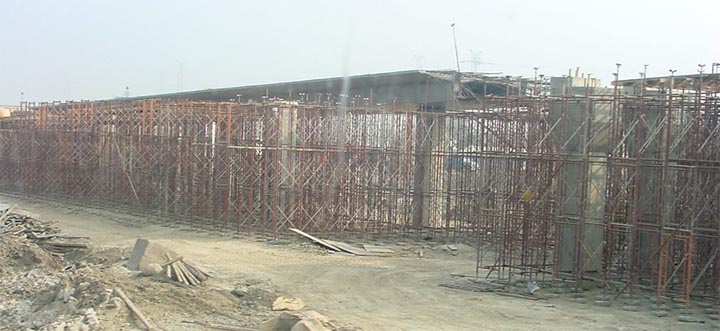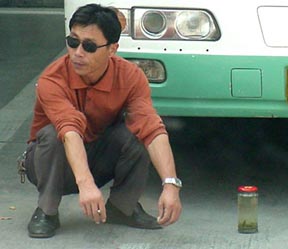| Next Day | ||||||||||
 |
||||||||||
|
|
||||||||||
| October 20, 2004 — Day 3
After breakfast, we boarded our motor coach for a journey to Suzhou. As we travelled along, what was most obvious was the massive building of super highways. As China takes to the automobile it is scary to think just how bad that smog is going to get. Two things that stood out as we arrived at Suzhou were the large groups of workers newly arrived from the countryside hoping to become part of the new wealth and the motorcycle taxis that darted through the landscape. We stopped and walked through the picturesque Lingering Garden. Lingering Garden is one of the four most famous gardens in China. The garden was first built in the 21st year of the reign of Wanli (1593) by Xu Taishi as his private residence. Among the attractions are the Nanmu Hall, known for its spaciousness, the Mandarin Duck Hall, exquisitely beautiful, and the "Peak Above the Clouds" actually a huge piece of rock, reputed to be the largest single rock south of the Yangtze River ever to be Hauled from a lake. The garden is intricately designed, providing a changing scene at every turn. Later we were on our way to a silk factory where we saw the process before being subjected to the sell which included a fashion show. It was quite the little operation with bus drivers relaxing outside with their tea waiting for people to return to the bus to show off their purchases. Suzhou is synonymous not only with gardens and canals, but also with silk. Its silk fabrics have been among the most prized in China for centuries, and the art of silk embroidery is still practiced at the highest levels. More than any other product, it was silk that made Suzhou a city of importance in China. When the Song Dynasty rulers moved the political capital to nearby Hangzhou, Suzhou became China's cultural capital. Following the lunch time attack of street vendors we went to view the leaning tower of Tiger Hill. Huqiu Tower, also known as the Yunyan Temple Tower (Cloud Rock Pagoda), was built in 959 AD and is the most ancient building in Suzhou. The tower began to lean in the Ming Dynasty (1368-1644), with a present inclination of three degrees and 59 minutes. Under the pagoda is the legendary grave of Suzhou's founder, He Lu, a 6th-century B.C. leader whose arsenal of 3,000 swords is also said to be buried in the park, protected by a white tiger. The artificial hill on which the pagoda stands was once an island. From our bus we got a view of the city which is renowned for the many streams, rivers and canals that crisscross the city. It has been called the “Venice of the East.” Our next stop stop was a silk embroidery factory which, of course, was also a sales outlet In Suzhou you find the most accomplished silk embroideries you'll find in China. The artists working upstairs stitch by hand, depending only on natural light, without magnifying lenses or other aids. Thinning the filaments of silk thread down to almost invisible lines, they work 2-hour stretches and take 10-minute tea breaks. The embroidery factory also produces double-sided embroideries on a canvas of thin silk gauze, a technique developed here in which two different figures, front and reverse, are stitched using two needles simultaneously — using what the factory guide calls "a secret technique." The finished embroidery is mounted in a mahogany frame carved in Ming or Qing Dynasty style. It was now time to leave Suzhou and get on the highway heading to Hangzhou. Along the way we came upon the only serious road accident on our trip (unbelievable). Fortunately, it was in the other lane. As we approached the city we noticed how rich the area had become as majestic homes dotted the landscape — each with 3 generations of family inhabiting them. As night began to fall we arrived at Hangzhou and had supper at our new home, the Sunny Hotel. It was another gourmet buffet dinner with everything you could ask for — except coffee. Our hotel room was another new experience. Futurists have told us it was coming and there it was — lights that went on and off as you entered and left a room. A bathroom mirror that never fogged. There were also trays of goodies that took close inspection to realize were things you were expected to pay for — be careful. |
||||||||||
|
|
||||||||||
 |
||||||||||
| Next Day | ||||||||||